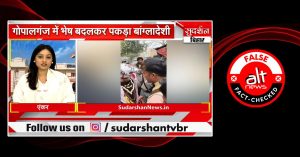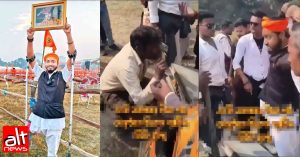Simmering communal tensions led to violent clashes in Nagpur on March 17. Right-wing outfits, such as the Vishva Hindu Parishad (VHP) and Bajrang Dal, led protests seeking the removal of Mughal emperor Aurangzeb’s tomb in Khuldabad.
Khuldabad, in Chhatrapati Sambhaji Nagar (previously Aurangabad), is about 450-500 km from Nagpur, which is where the parent Hindutva organisation, the Rashtriya Swayamsevak Sangh (RSS), is headquartered.
Tensions heightened after claims began circulating that a cloth with Islamic inscriptions (chadar) was burnt during the protests by the VHP and Bajrang Dal. Soon after, the president of a group called the Minorities Democratic Party, Faheem Khan, along with 50 supporters, went to the police station in Ganeshpeth to lodge a complaint against Bajrang Dal and VHP activists for allegedly burning the chadar during protests. Khan reportedly then gathered around 500 Muslims near the Chhatrapati Shivaji Maharaj statue in the Mahal area and the crowd allegedly refused to budge.
By evening, around 7:00 pm, the situation flared up at three locations in Nagpur—Mahal, Bhaldarpura, and Hansapuri—after word spread widely that the chadar was burnt during the demonstrations. Soon, violent clashes broke out, resulting in over 30 people getting injured. There was also large-scale vandalism in which many houses were attacked and vehicles torched. So far, one person succumbed to injuries in the clashes.
Maharashtra chief minister Devendra Fadnavis said authorities had identified 104 accused individuals, with 92 already held, including 12 juveniles. Over 68 inflammatory social media posts linked to the violence have also been flagged and deleted, according to him. However, the CM claimed that no religious symbols (the chadar) were desecrated during the demonstrations.
Fadnavis Claims Holy Chadar Not Burnt, Contradictory Statements From Police
In the aftermath of the incident, Fadnavis maintained that the clashes in Nagpur were premeditated by ‘some people’. Addressing the Maharashtra assembly on March 19, he said in Marathi:
“Since 1992, there have been no riots in Nagpur… the incident (riot) that took place the other day…not necessary that this community or that community (is involved), but it has come to notice that some people intentionally committed it (riots). The reason being, when a symbolic effigy of Aurangzeb’s tomb was burnt, there was no ‘Ayat’ (Quranic verse) on it. We have properly verified it. We got it (video) magnified and verified. But some messages claiming that the verses had been burnt were spread, due to which that incident (riot) took place… The people who disrupt social harmony, those who intentionally spread rumours, will also be held accountable. Already action has been taken, some of them have been arrested.”
The previous day, on March 18, Fadnavis told the assembly that a ‘rumour’ was spread on March 17 that the effigy burnt during the protests had religious scriptures on it.
The police, too, initially denied claims that a cloth with religious text was burnt during the demonstration. However, in an interview with journalist Rajdeep Sardesai on March 18, Nagpur’s commissioner of police, Kumar Singal, said he couldn’t “confirm what was exactly written on the chadar”.
A report by media outlet The Print cited the Maharashtra Police as saying that a chadar was, in fact, burnt during the demonstrations. It did not name the police officials who made the statement.
Unidentified Bajrang Dal office bearers also told The Indian Express that they had only burnt an effigy of Aurangzeb during the demonstration.
Fact Check
Several videos on social media and aired by news outlets show an effigy covered with a green cloth, with Aurangzeb’s picture placed on top. The protestors are then seen beating it and setting it on fire. It is not clear from these videos what the text on the green cloth says.
Maharashtra: Vishwa Hindu Parishad (VHP) and Bajrang Dal staged a protest in Nagpur, demanding the removal of Aurangzeb’s tomb from Maharashtra. Led by Govind Shende, protesters burned an effigy of Aurangzeb and chanted ‘Jai Shri Ram’ slogans near Shivaji Maharaj’s statue pic.twitter.com/7u8hXwT7Tm
— IANS (@ians_india) March 17, 2025
However, Alt News found a Facebook video of the demonstration shared by news outlet Star Maharashtra, where the effigy covered with a green cloth can be seen being kicked and beaten with sticks by protesters, who later light it on fire.
नागपुरात यामुळे भडकली दंगल
#nagpur #nagpurpolice #DevendraFadnavis #EknathShinde #AjitPawar #NCP #Shivsena #udhavthakare #AdityThakare #chsndrashekharbawankule #Star Maharashtra#nitingadakari
Posted by Star Maharashtra on Monday 17 March 2025
The text on the green cloth is visible in the video above. Alt News reached out to three people to understand whether the cloth shown here contained religious text. These sources who have knowledge of Islam and understand the script confirmed that the green cloth was indeed a chadar, a totem for Muslims, and the text on it were verses from Muslims’ holy book, Quran.
For a clearer view of the text, we located a similar mat on an online marketplace. With the help of sources, we were able to determine that the textual bits visible in the video posted by Star Maharashtra matched the text in the mat we found online.
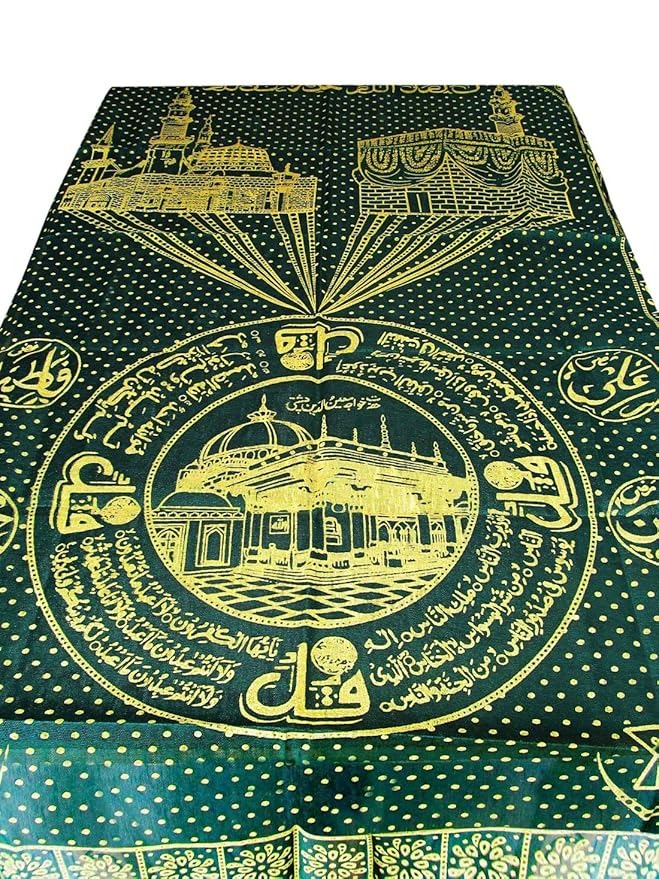
One of the three sources, an Islamic scholar, told Alt News that they were able to identify at least two of the four Quls or chapters from the Quran—Surah Al-Ikhlas or Qul Al Falak and Surah Al-Falaq or Qul Al Ikhlas—written around the circle on the chadar used during the demonstrations. Additionally, both mats also had images of important religious monuments in Islam. Below is a comparison.

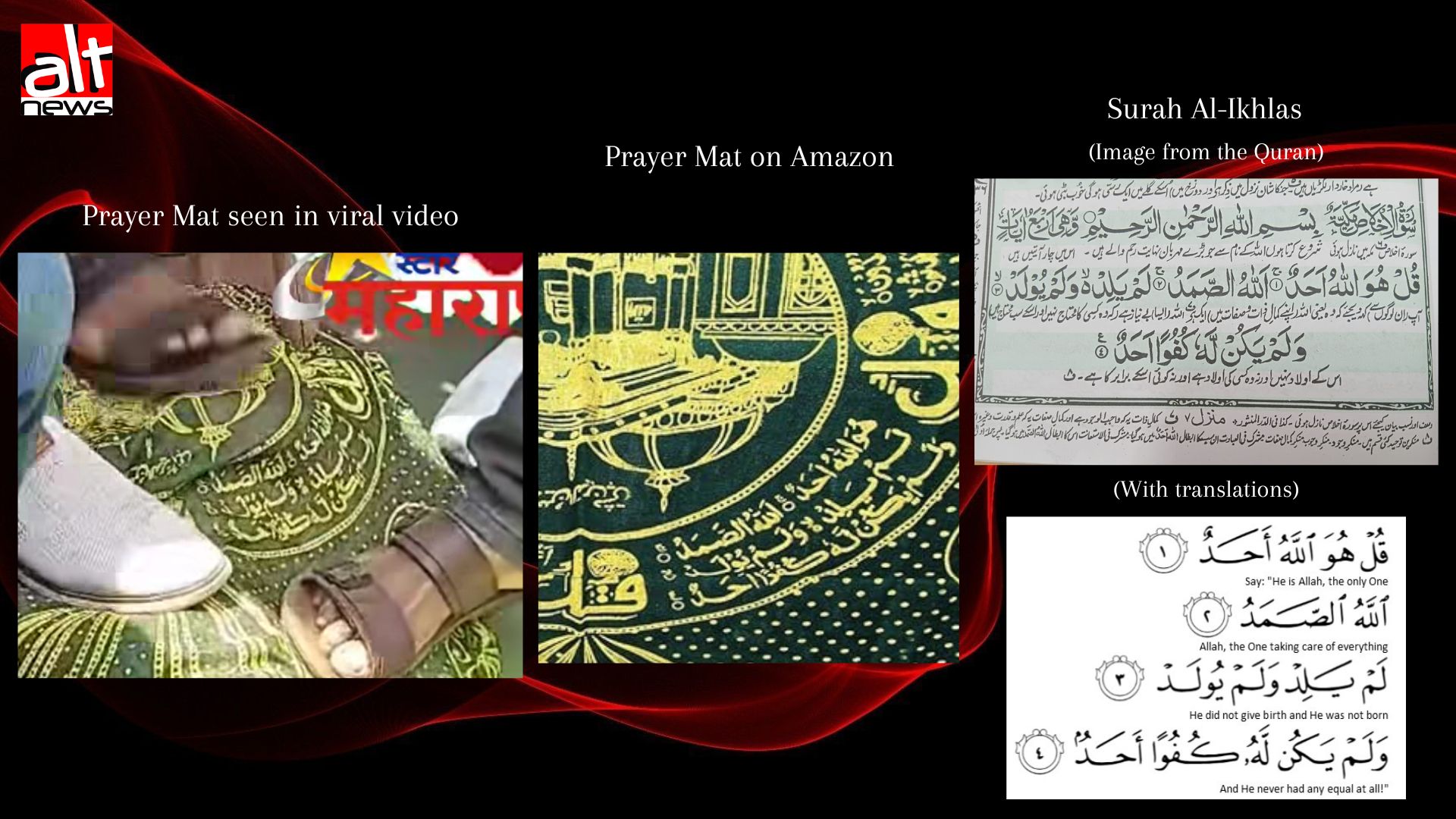
To verify that the Facebook video posted by Star Maharashtra was from the demonstration in Nagpur on March 17, we compared it with an image by the Press Trust of India. As one can see, a lot of the protestors’ shoes match. The matching shoes in the two sets of images—screenshots from the Star Maharashtra video on the left and the PTI image on the right—are circled in the same colour.
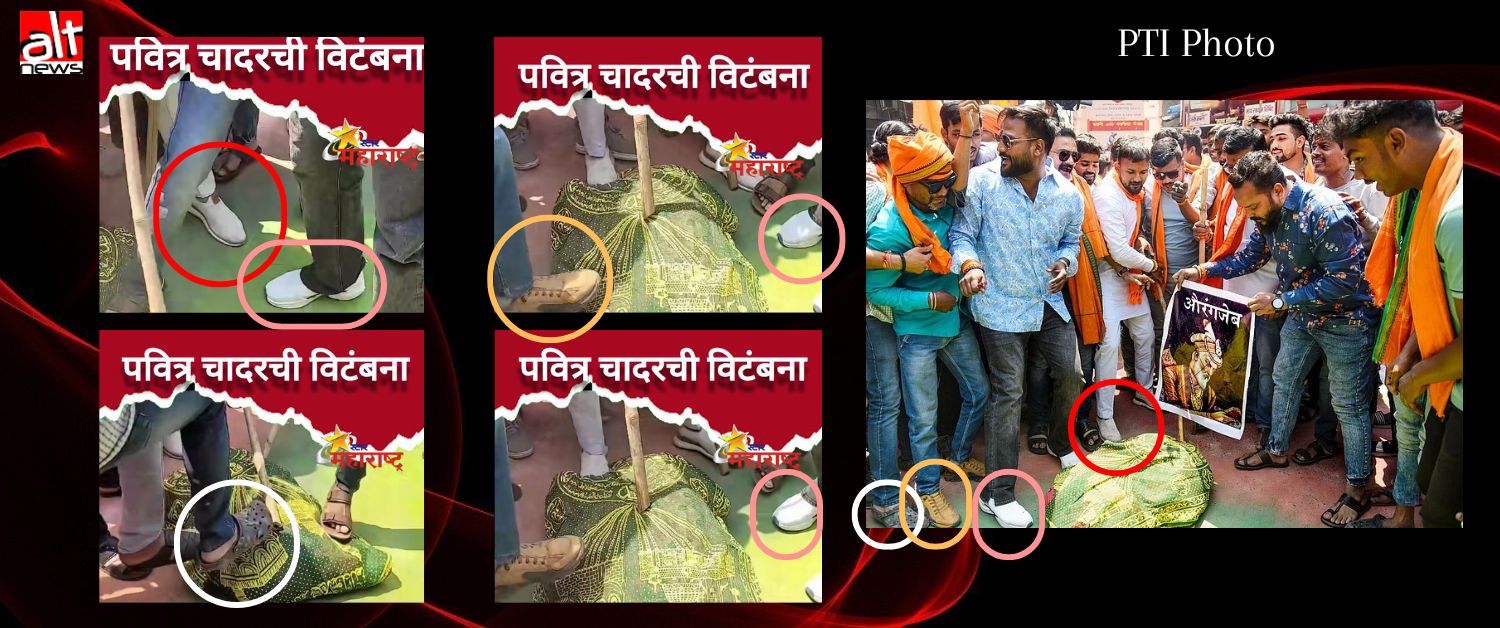
An FIR was filed against journalists Mohammad Shazad and Zakir Ali Tyagi for posting videos from the demonstrations by the Bajrang Dal. They were accused of inciting violence between different communities and against the police force.
It doesn’t help that there were three versions from the police: One where they have denied the burning of a piece of cloth with religious text, another where the commissioner of police has gone on record to say that he ‘couldn’t confirm’ whether or not the burnt chadar had religious text and a third where the Maharashtra Police have said that a chadar was indeed burnt.
Video evidence examined by Alt News shows that a chadar or cloth bearing religious Islamic text—specifically the four Quls from the Quran—was desecrated and burnt alongside an image of Aurangzeb during the demonstrations by the Vishva Hindu Parishad and Bajrang Dal. Statements by chief minister Devendra Fadnavis and the police claiming otherwise are not true.
Independent journalism that speaks truth to power and is free of corporate and political control is possible only when people start contributing towards the same. Please consider donating towards this endeavour to fight fake news and misinformation.

